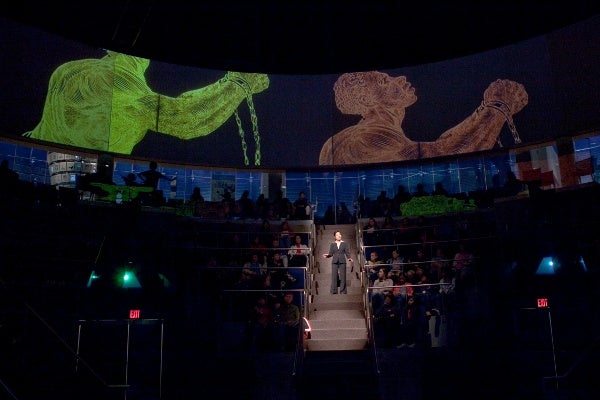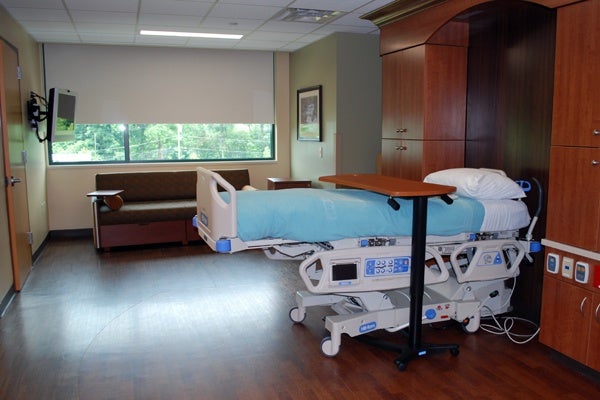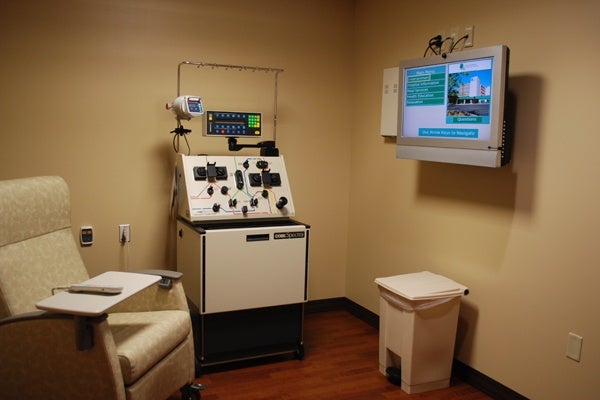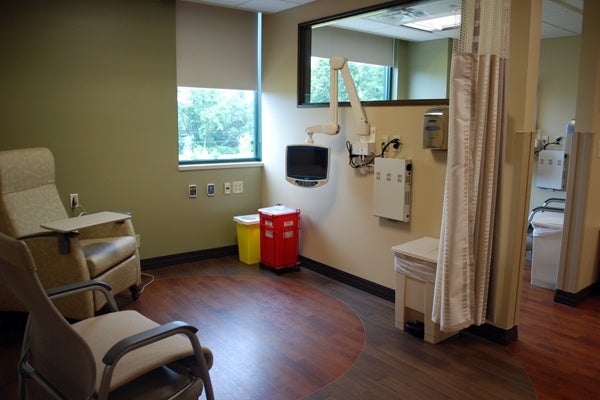New stem cell transplant unit joins others in Philadelphia region
A new unit for cancer patients requiring stem cell transplants opened this week at the Cancer Treatment Centers of America in Philadelphia. It joins other similar programs in the city, including those at the Hospital of the University of Pennsylvania, Thomas Jefferson University Hospital and Hahnemann University Hospital.
Stem cell transplantation is a procedure considered for patients with hematologic malignancies, types of cancer that affect the blood, lymph nodes or bone marrow. Examples include acute and chronic leukemias and Hodgkin’s and non-Hodgkin’s lymphomas.
The idea is to repopulate the body with healthy cells that can regenerate — stem cells. For this reason, a transplant often follows a course of chemotherapy that aims to destroy all of the body’s cancer cells.
“A lot of times with a stem cell transplant, you’re trying to cure the patient,” said Dr. Pamela Crilley, the CTCA chief of medical oncology and head of the new unit. “What you try to do is use the minimally toxic treatment that’s going to cure them.”
CTCA is a for-profit organization that has five facilities throughout the nation. After a similar program is finished at the Tulsa, Okla., site, three of the CTCA locations will offer stem cell transplants.
The Philadelphia unit represents the completion of a nine-month, $14.5 million capital project, part of a larger $40 million expansion initiative.
Lawton Robert Burns, chair of the health care management department at the Wharton School at the University of Pennsylvania, says he is skeptical that the unit is fulfilling an unmet demand, given the other centers in the region.
However, Burns adds that organizations like CTCA often feel pressure to stay competitive with academic facilities by offering the most up-to-date technologies.
“It’s an effort to seem more advanced than your other competing programs and to play with the big boys,” Burns said. “If you develop the new technologies, you can recruit the specialists. And hopefully the specialists then bring their patients to the center. And so it’s almost like a chain reaction.”
Burns recalls a period in the 1990s when Northeast Philadelphia community hospitals lobbied against state legislation that prevented them from performing the most high-tech cardiac surgeries found at hospitals like Temple and Jefferson. When the legislation expired in 1996, these hospitals did enter the cardiac surgery marketplace.
However, Burns says that the demand for cardiac services did not increase and the effect was a more “diluted” system that did not improve care. He worries a similar phenomenon could now be happening with stem cell transplant units.
“Volume matters. Basically, the more volume you do, the more experience that clinicians get, the more expertise the nursing staff develops,” Burns said. “So if you’re not growing the volume, and you’re just diluting the market share, you may — I can’t say for sure — but you may have some negative effects on the quality of care delivered at the various places.”
CTCA representatives say their program is unique for its integrated model. For example, the center offers naturopathic side-effect management, including aromatherapy, as well as mind-body counseling for patients and families. Crilley, the oncologist, adds that several patients are already signed up for treatment.
Depending on the type of cancer, stem cell transplants are either allogeneic — from a donor to a patient — or autologous, meaning that they come from and are returned to the same person.
Donors for an allogeneic transplant can be siblings or unrelated matches found through the National Marrow Donor Program. Pre-transplant chemotherapy practically eliminates the patient’s immune system, getting it ready to accept another person’s.
“When you do an allogeneic transplant, you’re not only transplanting bone marrow, you’re transplanting an immune system,” Crilley said. “So once that has really well in-grafted and you don’t have graft vs. host disease, which is one of the complications, then you can eventually get off of immunosuppression.”
Even though the cure rate with allogeneic transplants is higher, there’s a greater risk that the patient could reject the new cells or develop an infection since the immune system is being suppressed.
The new CTCA unit is designed to block any possibility of infection that could lead to an illness like pneumonia. Visitors must wash their hands twice and walk through an anteroom, which controls the air pressure and sends all airflow and possible germs away from the patients’ rooms.
The unit has the capacity for eight inpatient as well as some outpatient procedures like infusion and stem cell collection. CTCA will start with mostly autologous transplants and then move to allogeneic. The typical inpatient stay following the self-to-self autologous transplant is two to four weeks.
—
Disclosure: Cancer Treatment Centers of America underwrites some programming on WHYY.
WHYY is your source for fact-based, in-depth journalism and information. As a nonprofit organization, we rely on financial support from readers like you. Please give today.












